
When the Great Demon King Piccolo was released upon the world, he broadcasted a message on television declaring May 9th as “Piccolo Day”…and promptly celebrated by announcing his ownership over the planet. Since then, May 9th has been officially recognised as “Goku Day” but, to make things simpler, I’m using this as a good excuse to celebrate all things Dragon Ball,
Released: 26 January 2018
Developer: Arc System Works
Also Available For: Nintendo Switch, PC, PlayStation 4, PlayStation 5, Xbox One, Xbox Series S
The Background:
Akira Toriyama’s Dragon Ball franchise, particularly Dragonball Z, is no stranger to videogame adaptations. In 1990, the first Dragonball Z videogame released for the Family Computer (Famicom) and, since then, various titles based on the long-running manga and its popular anime counterpart have been released, generally as shameless rip-offs of Street Fighter II: The World Warrior (Capcom, 1991), tournament fighters or one-on-one beat-‘em-ups that retell the events of the anime over and over again. After Bandai Namco acquired the rights to the franchise in 2009, they routinely released new Dragon Ball titles on an annual basis, with the games now incorporating elements from the long-awaited Dragon Ball Super (2015 to 2018). Following the critical and commercial success of Dragon Ball Xenoverse 2 (Dimps, 2016), the publishers turned to Arc System Works, known for their Guilty Gear fighting games (ibid, 1998 to present), to develop a three-on-three fighter to address issues with power balances. Akira Toriyama designed a brand-new character to act as the game’s antagonist and the game was initially met with a great deal of enthusiasm. This was reflected in the sales, with Dragonball FighterZ becoming the fastest-selling Dragon Ball game at the time, and the reviews, which praised the anime-style visuals and explosive combat, with the game seen as one of the best in the franchise. While some criticised aspects of the gameplay, the game performed well enough to not only be bolstered be additional downloadable content (DLC) but also to receive an updated PlayStation 5 and Xbox Series S/X port.
The Plot:
The Red Ribbon Army continues to plague Son Goku and his allies when the hitherto-unknown Android #21 uses the Dragonballs to resurrect their fiercest foes. Their powers dampened by Android #21’s energy waves and faced with an army of puppet-like clones, the Z Warriors join forces with their worst enemies and a mysterious possessing soul to combat Android #21’s threat.
Gameplay:
Dragonball FighterZ is a 2.5D fighting game in which players initially pick from a roster of twenty-one characters from across the Dragonball Z and Dragonball: Super series’ to take part in fast-paced, cinematic bouts. From the moment you start the game, you’re bombarded with pop-ups, messages, and notifications and that’s before you even start to work out how to navigate the main hub, which is a chibi-fied recreation of famous locations from the franchise, such as the World Tournament arena and Master Roshi’s island. Thankfully, you can either guide your chubby little avatar to various gameplay options, warp there with the Left Trigger, or bring up the options menu to take a look at the game’s controls. As you might expect, a practice and tutorial mode are included and tutorials are commonplace throughout the “Super Warrior Arc” of the game’s story mode so you can quickly get to grips with the fighting mechanics. Although you’re initially taught the basics in a one-on-one scenario and you have the option of fighting one-on-one (as well as customising the difficulty level of the computer-controlled opponents, setting the rounds and timer limits, and other options before fights outside of the story and Arcade modes), Dragonball FighterZ is primarily a team-based fighter. You pick three characters to form a team and can tag in and out in, which continues to be an aggravation for me as I’ve never really clicked with team-based fighters and find it to be an even more overplayed cliché than a Street Fighter II clone.

Thankfully, Dragonball FighterZ only takes inspiration from Street Fighter II; the fighting mechanics, while obviously similar given the presentation, are noticeably different and perfectly suited to reacting the anime’s explosive, high-intensity battles. X sees you throwing a light attack, Y a medium, and B a heavy (which can send you opponent flying away or through the environment for a “Destructive Finish” if timed correctly). Successive presses of each button pulls off different combo moves; you can mix and match, but the focus is more on mashing, say, Y as your character will automatically pull off a Super Move at the end of that simple combo string, negating the need to perform quarter-turns on the left stick or directional pad. A tosses out a ki blast; you can hold or rapidly tap it and press A after pushing towards your opponent to swat away their projectiles, just like in the anime. Although you can jump, dash, and sidestep towards and away from your opponent, the Right Trigger and Right Bumper allow you to dart at them with a “Dragon Dash” and “Dragon Rush”, respectively, allowing you to close gaps quickly, land a hit, and pull off a quick combo in mid-air or on the ground. These will also break your opponent’s guard, sadly executed by holding away from your foe just as they land an attack. I would much prefer a dedicated block and counter button as pushing back isn’t very reliable, though you can always press Y and B together to instantly teleport behind the opponent for an attack as long as you have at least one bar on your ki gauge.
The ki gauge builds up as you dish out and take damage, but you can also manually power up by holding X and A together. The more bars you have, the stronger and more elaborate special moves you can pull off and, when you’re at maximum power, you can pull off your character’s ultimate attack using a simple input of a quarter-turn back or towards your opponent and pressing RT or RB afterwards. These ultimate moves certainly are visually impressive and are a great way to end a match, and they’ll also partially destroy the stage for maximum impact. As it’s a team-based fighter, you can call in an assist from one of your teammates at any time with the Left Trigger and Bumper; this allows you to string together massive two- or three-way energy attacks or dish out an even bigger combo, though be warned as you can easily get inescapably caught in your opponent’s team attacks as well. Holding either trigger allows you to switch to one of your team mates; this is essential as switching allows those not in play to regain a bit of health and some characters are better suited for different situations, such as larger characters like Nappa being slow and powerful and smaller characters like Teen Gohan being more agile and nimble. When playing the game’s story mode, the damage you take carries over between fights; you’ll regain some health (and downed characters will be revived) after a victory, but it’s best to switch often during the more intense battles to keep your health up. However, while you can set the difficulty of the computer in local play, arcade bouts become progressively difficult depending on which route you take. The easiest sees you fighting past three teams and the hardest has you battling seven and defeating each route unlocks a harder version for a greater challenge, and you can also play online or take part in a tournament.

At first, Dragonball FighterZ seems intimidating but the story mode and practice options help guide you through the basics and the game initially plays very simply. Combos are easy to pull off with just a few mashes of the same button and it’s pretty easy to get into a rhythm of dashing at your opponent, pummelling them with a light combo, then focusing on medium combos with a super finish and calling in a team assist to speed things up. When playing the story mode, you’re actively encouraged to battle as many opponents as possible to grow stronger as, narratively, this unlocks your character’s full power. Each chapter presents a map and a set number of turns; your goal is to move around the map, taking out opponents and earning rewards, on your way to the boss fight. You cannot simply skip to a space and must actively move step by step around the map, which is either painfully linear or slightly more complicated, but always very restrictive and annoying. I never ran out of turns so I’m not sure what happens if you use them all up but I do know that you need to manually save on this screen as a game over mean replaying the entire map from the start, which can be very annoying in the later, more difficult arcs. Generally, fights aren’t very difficult and you’ll breeze through them; even higher-level bouts against Kid Buu or boss battles against the likes of Perfect Cell and Frieza can be painfully easy, but don’t let yourself become complacent. I fought every single opponent across the three arcs, finishing the story at around level forty, and eventually did have to take the battles more seriously as the computer upped its game. You’ll see this difficulty spike more prominently in the arcade mode where, after the first fight or two, you’ll get absolutely decimated if you don’t keep your wits about you. The “Super Warrior Arc” likes to pepper the map with tutorial fights; completing these will earn you extra rewards, and you’ll earn similar additional rewards if you fight Kid Buu when he appears, but otherwise it’s just a series of fights over and over with little variety apart from recuing a new character or the amount of opponents you face or characters you control, meaning it gets very repetitive very quickly.
Graphics and Sound:
In terms of presentation, Dragonball FighterZ is on a whole new level! Of all the Dragon Ball videogames I’ve played, this is the one that most closely emulates the kinetic action of the anime. Everything from the character designs to the stages, cutscenes, music, and voice acting is all ripped straight from the anime and the attention to detail is really impressive. Unlike some cel-shaded Dragon Ball videogames, Dragonball FighterZ sticks to a 2.5D aesthetic so characters never appear award or blocky and the illusion of playing as hand-animated sprites is very convincing. You can pick to have Japanese or English voices, which I know is a big deal for some “purists”, and the English voice cast all return to tell the game’s interesting (if somewhat derivative) story. The story is basically just a mish-mash of familiar arcs from Dragonball Z but I appreciated that it was an original story for a change and not just retelling the same story over and over, though the game does pepper in some classic story moments if you meet the right criteria for a “Dramatic Finish”. Indeed, it’s the fights where the presentation really shines; sticking to the 2.5D plane is admittedly a little more restrictive than more 3D-orientated Dragon Ball videogames but it makes the action so much easier to follow and all the attacks, special moves, and ultimate attacks are beautifully animated, with the game employing cinematic perspectives and drawing from the anime for the more destructive energy attacks.
Sadly, the game’s stages don’t fare quite as well. There are numerous stages to pick from, all of them very familiar, such as the Supreme Kai’s world, Planet Namek, a futuristic city, the rocky wastelands, and even the depths of space. Some stages will react to your attacks, breaking and crumbling apart around you, and you can even transition to other stages by finishing your opponent with a heavy attack in some locations. Unfortunately, there’s not a lot happening in them; you can’t directly interact with anything, there are no stage hazards to worry about, and they’re simply just there for the characters to have somewhere to fight, which is fine but I like it when there’s a little extra to do. The hub world takes on a completely different visual style; you pick a chibi-style character to wander about with and access different modes, which is cute and a little different but initially a bit puzzling. The story mode’s cutscenes can all be advanced with the press of a button, or skipped entirely, but they’re enjoyable enough. It’s fun seeing Goku interact with Perfect Cell and Frieza and you’ll trigger unique dialogue and interactions the more characters you rescue and recruit, though some characters are reduced to simply being silent clones for you to fight. Outside of the story mode, you can select different colour schemes for your characters but this is disappointingly limited; rather than selecting different skins for characters, they just take on a different hue, with the only bit of creativity I found being that you can apply Vegeta’s original colour scheme. It would’ve been nice to see different gi for certain characters, maybe Yamcha’s bandit look or Adult Gohan’s “Great Saiyaman” persona or Vegeta’s “Majin” form, but sadly we just have to make do with them sporting ill-fitting alternate colours.
Enemies and Bosses:
There are twenty-one playable characters in Dragonball FighterZ; three more are unlockable and a further twenty can be purchased as downloadable content, meaning you’ll face forty-four different fighters from across the franchise between the different game modes. In the story mode, the vast majority of enemies you’ll face are cloned versions of the main roster; these guys sport a black colour scheme with red eyes (a look that is also missing from the colour options, I might add) but are otherwise indistinguishable in their fighting style. The game seems to categorise fighters in three ways: small and fast, balanced, and big, slow, and powerful. Thus, playing as Krillian is not exactly the same experience as playing as Tien Shinhan, which is also different from playing as Majin Buu, even though the button inputs remain largely the same for all characters. Sometime you’ll have to press down, down, A for a move; some characters have you pressing X more than A, and very rarely you’ll find they have unique aspects to their characters. Future Trunks, for example, uses his Z Sword and Frieza can temporarily transform into “Golden Frieza”.
This extends to even more unique traits at times. While both Kid Buu and Piccolo can extend their limbs, Majin Buu, Kid Buu, and Android #21 can turn their enemies into chocolates and sweet treats to deal massive damage and power themselves up. Some characters will even call on other recognisable faces to aid them in battle: Captain Ginyu, for example, sends the Ginyu Force to attack you in place of more traditional projectiles, Nappa spawns in Saibamen, and many of Android #18’s attacks see her working in tandem with her brother, Android #17, who appears only here and in cutscenes unless you shell out for the DLC. Consequently, while it’s useful to have an understanding of how the different fighters play and what they’re capable of, it’s rare that you have to alter your strategy too much, but it does factor into how you play. Android #16, for example, is slow and bulky but makes use of rocket-powered punches and grapples, piledriving you into the ground if you get too close; his ultimate move also sees him left with the tiniest slither of health, so that’s something to consider when fighting. Kid Buu can rain destruction across the arena with his “Human Extinction Attack”, Adult Gohan can power up to his “full potential”, and many characters, like Goku and Vegeta and their variants, make use of screen-filling energy attacks, sometimes even warping about for increased damage.
You’ll only encounter actual boss battles in the game’s story modes; here, you’ll battle some recognisable Dragonball Z villains and heroes in each arc, often recruiting them after victory. Generally, you’ll fight the same clones over and over and they don’t pose much challenge until later in the story, and the same is true of guys like Captain Ginyu, Perfect Cell, and Frieza. While they’re sold as formidable opponents, you often fight them with a three-on-one advantage so they can be complete pushovers, especially compared to other teams made up of ki-spamming assholes like Vegeta and Yamacha. As ever in Dragon Ball videogames, I found that the weak human characters were more of a problem than God-tier enemies like Majin Buu; Yamcha, Tien, and Krillan always seem to cause me issues in these games, though I’m not sure if that’s an actual gameplay feature so they can go toe-to-toe with Super Saiyan God Super Saiyan Goku or if it’s just a mental block on my part. As you explore the various maps, additional battles will spawn in and Kid Buu will sometimes take over a spot. These battles are touted as being tougher since Kid Buu is a few levels higher than you, but don’t actually become more challenging until the last story arc and, by then, you’ve pretty much mastered the fighting mechanics and team-based combos. Thus, the only real “boss” of the story mode is Android #21, a hybrid of android and majin who acts as the final boss for each of the three story chapters. Although she’s capable of consuming foes for massive damage, slicing an explosive energy blade across the arena, and attacking in a flurry of super speed, her most dangerous trait is that she can absorb abilities from her foes using her “Connoisseur Cut” technique. Each time this lands, a bar fills up above her health meter and, when it’s full, she’ll pull off a new attack, one dependant on the type of character she’s facing. Still, while she’s always at a higher level and far more aggressive than other enemies, she only poses a real threat at the end of the “Android 21 Arc”, where you first have to battle her with your team and then alone as you control her “good” half in a battle to the finish.
Power-Ups and Bonuses:
In addition to building your ki gauge in battle, which allows you to pull off more elaborate special attacks, you can also power up your fighter and restore a little health by pressing RB and RT together once per match to enter a “Sparkling” state. By battling with specific fighters on specific stages and performing a specific attack, you can also recreate moments from the anime such as Goku obliterating Frieza on Planet Namek. Every battle earns you various rewards; primarily, you’ll earn Zeni, the currency of the Dragon Ball franchise, to spend in the shop, though there’s really not much worth buying in there. In the story mode, you’ll earn different Player Skills; up to three can be equipped at any one time and these will buff your attack, defence, regenerate health, or fill your ki gauge faster, amongst other perks. You’ll earn higher levels of Player Skills as you progress, but there’s no crafting, combination, or discard system here so it’s pretty basic. You’ll also earn experience points (EXP) in the story mode; earn enough and you’ll level-up, though I can only assume this raises your fighter’s stats as I never actually looked too deeply into it. Unfortunately, only fighters you play as earn EXP so you either need to mix up your team or stick with the same fighters to have the best chance as higher-level opponents definitely present more of a challenge; they’re faster, more aggressive, and string together greater combos and can easily down your lower-level fighters if you’re not careful. Each team member can be further customised to perform one of three assist actions when called into the fight and you will recruit more characters, though not every character will be playable and there are some restrictions based on the narrative. This isn’t the case in local or arcade fights, though you don’t need to worry about EXP or Player Skills or anything here, though you can acquire the seven Dragon Balls by pulling off combos outside of the story mode. Once you have all seven, another combo string will summon Shenron and allow you to pick from four wishes, including reviving an ally or regenerating your health, which is a fun bonus.
Additional Features:
Dragonball Fighter Z offers thirty-five Achievements for you to earn, three of which you’ll automatically earn just by completing the story mode, though you’ll inevitably snag a few more just by playing through it. Defeat Kid Buu, for example, and you’ll snag some G; another will pop for triggering a “special conversation sequence”, and a couple more once you level-up high enough. You’ll also earn Achievements for clearing each of the different arcade mode paths, completing combo challenges and tutorials, and for playing online, but there aren’t many fun ones to get here. There are no Achievements to earn from Destructive Finishes, for example, or recreating the Father/Son Kamehameha against Perfect Cell for a Dramatic Finish or for summoning Shenron, which is a shame. You can purchase items from the shop, but they’re pretty pointless; you mainly buy new chibi avatars, colours, and stickers for use online. You can unlock Android #21 by beating story mode and there are a couple of ways to unlock Super Saiyan God Super Saiyan Goku and Vegeta, from clearing harder arcade paths or the story mode or buying them, but note that you cannot have two of the same character in your team at once (so, you can’t have Vegeta > Future Trunks > and Super Saiyan God Super Saiyan Vegeta in the same team). You can also play online or against a friend in a local battle, saving replays and such, and there are twenty DLC characters to add to the roster, though no additional story modes or Achievements tied to them so it’s probably better to wait for a sale as the packs are quite expensive and I’m not sure I’m that desperate to play as Bardock!
The Summary:
I’d been waiting to play through Dragonball FighterZ for some time. I put it off not because I wasn’t interested in it, but because I wanted to wait to see if the game would be re-released with all the DLC included. Sadly, it wasn’t, so I bit the bullet and went for it, with only my lack of skill at Street Fighter II-style fighting games being a concern. Then it turned out to be a team-based fighter and my concerns grew; then the difficulty curve went all wonky, being ridiculously easy for most of the playthrough and then steeply rising as the story mode progressed or I tackled one of the arcade modes. As someone who is rubbish at “frame cancels” and all that nonsense, I really enjoyed how simple the game’s combat was; with just a few button presses, you can easily recreate the fast-paced, high-impact fighting style of the anime and I loved the big, explosive special moves and the voice acting on offer here. The game looks absolutely gorgeous, too; it’s easily the closest I’ve ever seen to playing the slick, action-packed anime. I also liked that it wasn’t just a retread of the same stories; while the original story might be a bit derivative, it’s still refreshing not to have to play the damn “Cell Games Saga” again! However, there’s a disappointing lack of content here; once you’ve beaten the story and arcade modes, there’s not much to come back to as the roster is pretty thin outside of the three unlockables and DLC characters, with no skins or variants to purchase or unlock. There’s also not much to the combat and gameplay beyond mashing buttons faster and making better use of your teammates; you can plough through most fights without issue and simply tank your way through others, but a little variety would’ve been nice, like maybe take a cue from the variables seen in Mortal Kombat X’s (NetherRealm Studios, 2015) Towers rather than just asking players to complete the same basic tutorials over and over. In the end, while it’s definitely the best looking Dragon Ball game I’ve ever played and I did really enjoy it, Dragonball FighterZ quickly outstayed its welcome with repetitive and mind-numbing fights akin to grinding and a lack of tangible rewards.
My Rating:
Pretty Good
Did you enjoy Dragonball Z FighterZ? What did you think to the team-based mechanics and action-orientated gameplay? Who was your go-to team? What did you think to the original story and Android #21 as a villain? Were you also disappointed by the lack of skins and playable characters? Did you ever clear all of the arcade pathways? What is your favourite Dragon Ball videogame and how are you celebrating Dragon Ball day today? Whatever your thoughts on Dragonball Z FighterZ, or Dragon Ball in general, leave a comment below or on my social media and check out my other Dragon Ball content!

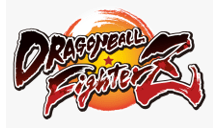



























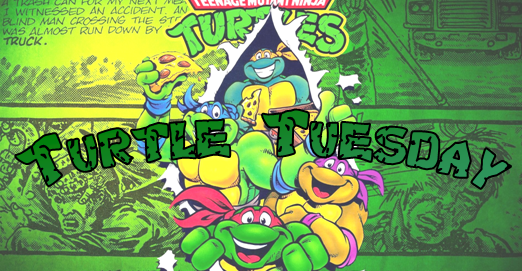













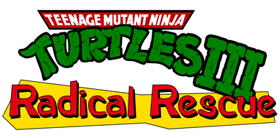

























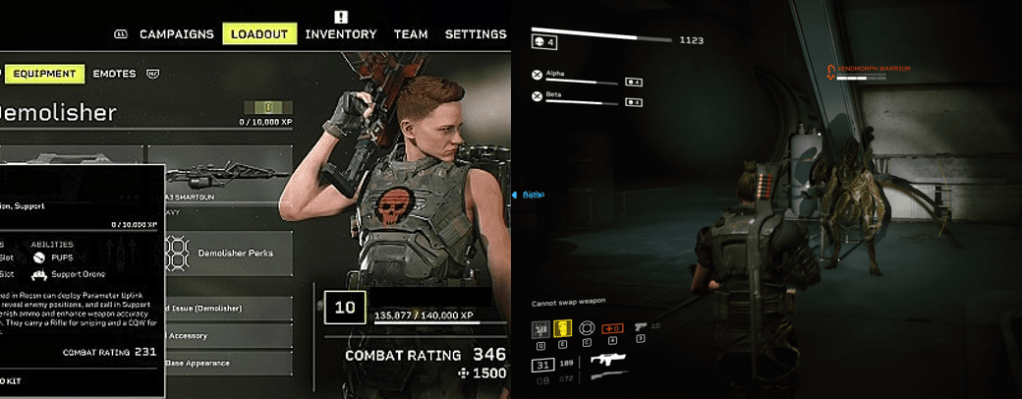
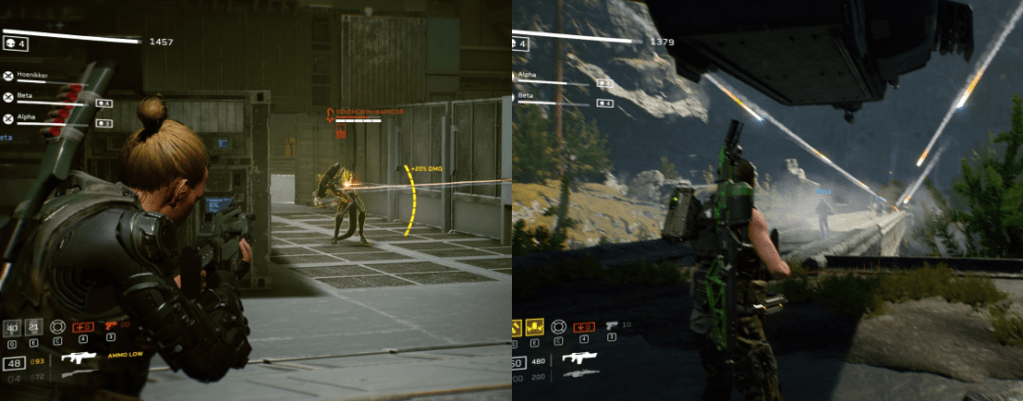
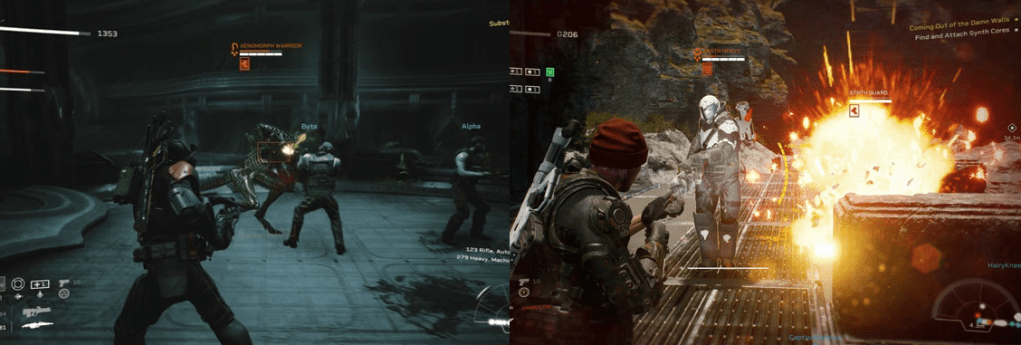

You must be logged in to post a comment.